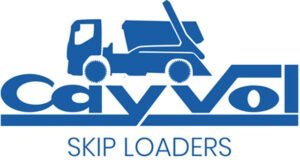
How to Safely Load Heavy Items into Skip Bin Loaders: Tips and Best Practices
Loading heavy and bulky items into skip bin loaders can be a daunting task, especially if you’re not familiar with the best practices. Whether you’re tackling a home renovation, clearing out a large property, or managing construction site waste, ensuring that you load your skip bin safely is crucial to avoid injuries and maximize efficiency. Here are some essential safety tips and best practices for loading heavy items into skip bin loaders.
1. Plan Your Loading Strategy
Before you start loading, it’s important to plan your strategy. Consider the size, weight, and type of items you need to dispose of. Make a list of the heaviest items and decide their placement in the skip bin. Heavier items should be loaded first and placed at the bottom of the bin to create a stable base and prevent shifting during transportation.
2. Use Proper Lifting Techniques
Improper lifting techniques can lead to serious injuries, including strains and sprains. When lifting heavy items, always use your legs, not your back. Bend your knees, keep your back straight, and hold the item close to your body. Avoid twisting your body while lifting or carrying heavy objects. If an item is too heavy to lift safely by yourself, ask for help or use lifting equipment.
3. Wear Appropriate Safety Gear
Wearing the right safety gear is essential when handling heavy and bulky items. Equip yourself with gloves to protect your hands from sharp edges and splinters, and wear steel-toed boots to safeguard your feet. If you’re dealing with particularly heavy items, consider wearing a back support belt to reduce the risk of back injuries. Additionally, wearing long sleeves and pants can provide extra protection.
4. Utilize Lifting Equipment
For extremely heavy items, manual lifting might not be feasible. In such cases, using lifting equipment like dollies, hand trucks, or forklifts can make the process much safer and more efficient. Ensure that you are trained in the proper use of this equipment and follow all safety guidelines. Using ramps can also help roll heavy items into the skip bin with minimal effort.

5. Disassemble Large Items
If possible, disassemble large items to make them easier and safer to handle. For example, break down furniture, dismantle machinery, and remove parts from appliances. This not only makes the items lighter and easier to load but also helps in maximizing the space within the skip bin. Keep all screws and small parts in a container to avoid losing them during the process.
6. Distribute Weight Evenly
Uneven weight distribution can cause the skip bin to become unbalanced, making it difficult and dangerous to transport. Place heavy items evenly across the bottom of the bin to create a balanced load. Fill gaps with smaller, lighter items to ensure everything is packed securely. Avoid overloading one side of the bin, as this can lead to tipping or shifting during transit.
7. Secure Loose Items
Loose items can move around and create hazards during the loading process and transportation. Use straps, ropes, or tarps to secure heavy and bulky items in place. This is particularly important if you’re loading items like metal pipes, lumber, or large appliances. Securing these items prevents them from shifting and potentially causing damage or injury.
8. Avoid Overloading the Skip Bin
Every skip bin has a maximum weight limit, and it’s crucial not to exceed this limit. Overloading the bin can cause it to become unstable and difficult to transport. It can also result in additional fees from the skip bin provider. Check the weight limit of your skip bin loader and monitor the weight as you load heavy items. If necessary, consider renting a larger bin or an additional bin to accommodate all your waste.
9. Be Mindful of Hazardous Materials
Certain materials, such as chemicals, asbestos, and flammable substances, require special handling and disposal. Do not load these materials into a skip bin without following proper safety protocols and regulations. Contact your skip bin provider for guidance on how to safely dispose of hazardous materials.
10. Keep the Area Clear and Organized
A cluttered work area can lead to accidents and injuries. Keep the area around the skip bin clear of obstacles and debris. Organize items before you start loading to ensure a smooth and efficient process. This reduces the risk of tripping, falling, or dropping heavy items.
Conclusion
Loading heavy items into skip bin loaders requires careful planning and adherence to safety guidelines. By following these tips and best practices, you can ensure a safer and more efficient loading process. Remember to lift properly, use appropriate safety gear, and distribute weight evenly to avoid accidents and injuries. With the right approach, you can tackle any heavy loading task with confidence and ease.
